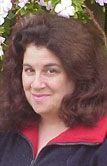December 2004 Article Tennis Server
|

 |
Book Review
Once in a while a body of work is created that truly serves the tennis community. And that is my opinion of "From Breakpoint to Advantage, A Practical Guide to Optimal Tennis Health and Performance." This book is a complete and comprehensive guide, written in layman's language, devoted to the prevention and treatment of all tennis injuries. Developed by two pioneers in the field, Babette Pluim, M.D., Ph.D. and Marc Safran, M.D., the book is simply an excellent reference. Dr. Pluim is a sports physician and Medical Director of the Royal Netherlands Lawn Tennis Association. She is the current President of the Society for Tennis Medicine and Science (STMS). She is the team physician of the Dutch Davis Cup and Fed Cup teams, and tournament doctor at the ATP and WTA tournaments in the Netherlands. She is a member of the ITF Sports Medical Commission, the ITF Wheelchair Tennis Medical Commission, and Age Eligibility Panel of the WTA Tour. She is editor-in-chief of "Medicine and Science in Tennis," the journal of the STMS, and "Geneeskunde en Sport," the scientific journal of the Netherlands Association for Sports Medicine. Dr. Safran, a former junior and collegiate tennis player, is a board certified orthopaedic surgeon specializing is sports medicine and interested in biomechanics. He is a board member of the Society for Tennis Medicine and Science and fellow of the American College of Sports Medicine and the American Academy of Orthopaedic Surgery. He is the director of Sports Medicine at the University of California, San Francisco. He has served as the medical director of the WTA tournament in San Diego and the neutral site physician at several Davis Cup tournaments. In other words, this book has been written by sports medicine practitioners with specialties in tennis. The book has six major components:
"Principles of Injury Prevention and Rehabilitation" begins with an overview of the biomechanics of tennis, covers the physiological demands of the sport, the equipment and surfaces (racquets, strings, balls, tennis shoes and different surfaces). This is followed by a section on injury prevention (before, during and after play) and general rehabilitation principles. The section on "Tennis Injuries" is extremely comprehensive. It is broken into three major components: Injuries of the upper body, lower body and trunk and spine. "Medical Issues" covers other medical conditions starting with the brain and nervous system, the eye, skin disorders, heart and blood vessels, the respiratory and digestive systems. This covers everything from tension, migraine and exercise induced headaches, to an extensive list of eye conditions, blisters, tennis toe, insect bites, exercise induced asthma to food poisoning. "Special Issues" addresses subjects such as heat stress, nutrition and supplements, doping and drug testing, overtraining, burnout and travelling. "Special Tennis Groups" discusses the junior player, veteran player, wheelchair player and women's issues. These include topics such as physical capacities, heat stress, epidemiology of injuries and conditioning. "Managing and Delivering Tennis Medicine Programs" explains the role of the sports/tournament physician, athletic trainer and physiotherapist. What I personally appreciate in this book is the tennis specific component. In the injury section, it lists the name of the condition or disease, provides a truly readable, understandable description of symptoms, methods used to diagnosis the condition, treatment (nonoperative treatments or surgery) and practical tips for the player. The latter ranges from exercises to strengthen or increase endurance, motions and strokes which should be avoided and when return to play should be initiated. The exercises are depicted by a series of photos with additional graphics which diagram the muscles and skeletal components affected. Here are two examples of "practical tips for the player:"
While no book takes the place of a medical professional, its content is a great source of information which will help you work with your physician. In my book, "From Breakpoint To Advantage" is an ace! Happy Holidays to you and your family... Until Next Year... Jani
This column is copyrighted by Jani Macari Pallis, Ph.D., all rights
reserved.
Dr. Jani Macari Pallis is the founder and CEO of Cislunar Aerospace,
Inc., an engineering and research firm in San Francisco. In addition
to her engineering practice, she has led two collaborations between
NASA and Cislunar, creating educational materials on the aerodynamics
of sports for pre-college students and educators. As the head of
NASA's "Aerodynamics in Sports" project, she has led a team of
researchers investigating the aerodynamics, physics and biomechanics
of tennis. The group has conducted high speed video data capture at
the US Open and research of ball/court interaction, footwork, serve
speeds, trajectories and ball aerodynamics. Pallis received a BS and
MS from the Georgia Institute of Technology, an MS in mechanical
engineering from the University of California, Berkeley and a Ph.D.
in mechanical and aeronautical engineering from the University of
California, Davis. She is a member of the Executive Committee of The
International Sports Engineering Association.
Questions and comments about these columns can be directed to Jani by
using this form.
|



October 2022 Tennis Anyone: Patterns in Doubles by John Mills. September 2022 Tennis Anyone: Short Court by John Mills. |
 You will join 13,000 other subscribers in receiving news of updates to the Tennis Server along with monthly tennis tips from tennis pro Tom Veneziano.
You will join 13,000 other subscribers in receiving news of updates to the Tennis Server along with monthly tennis tips from tennis pro Tom Veneziano. 